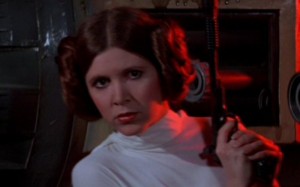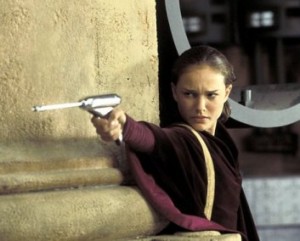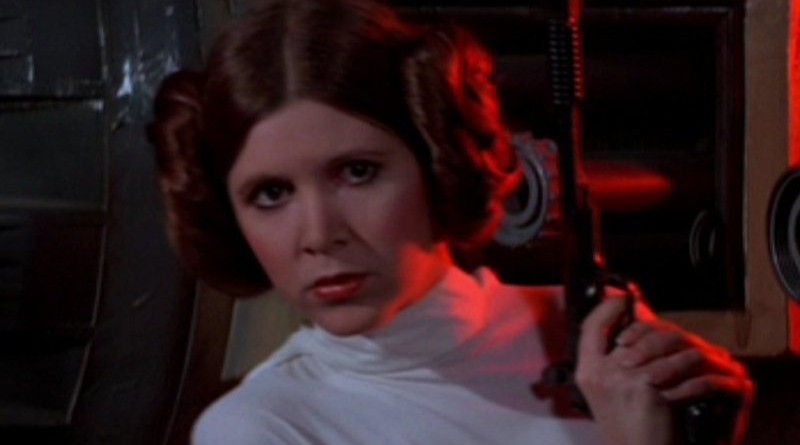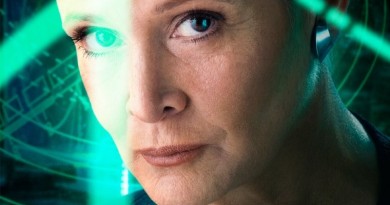Creating Lasting Impressions of Female Characters in Star Wars
Last Friday, Laura Hudson’s opinion piece at Wired.com, Leia Is Not Enough: Star Wars and the Woman Problem in Hollywood, discussed the Star Wars movies as illustrations of a broader imbalance in leading female characters in major Hollywood films. Hudson acknowledges the existence of great female characters within the Expanded Universe:
And it’s rife with excellent female characters who have already been embraced by Star Wars fandom, notably: Mara Jade, who appears at different times as an assassin, smuggler, Jedi Master (and Luke Skywalker’s wife); and Jaina Solo, a Rogue Squadron fighter pilot and Jedi Knight (and, you guessed it, Leia’s daughter with Han).
Yesterday at The Atlantic, Noah Berlatsky’s commentary ‘Star Wars’ Needs a New Approach to Gender—Not Just More Women uses Hudson’s point to launch a broader critique of gender issues in Star Wars and Hollywood movies:
Star Wars’ lack of women seems linked to a deliberate lack of interest in women. The film franchise is designed to be a series of male genre pictures, and for proof, all you need to do is look at the innovative, non-traditional approaches to gender other sci-fi works have taken—which Star Wars and other Hollywood films avoid.
Specifically on the matter of female characters in the Star Wars films, Berlatsky writes:
The creators of Star Wars could have used those powers of imagination to create a world with lots of important female characters. Instead, they chose to create a world in which women barely exist. …
Certainly, if Star Wars can pick up some solid women characters from the extended series, that would be all to the good. But I’m still not convinced that doing so would get to the root of Star Wars’ gender imbalance—or, as Hudson says, to Hollywood’s.
If George Lucas’ Star Wars movies had a general lack of interest in women, I don’t think we’d be talking about Star Wars as the pop-cultural phenomenon it is today. Princess Leia, while just one character, was a game-changer, just as Uhura was a brave step forward in the original Star Trek series. Star Wars wouldn’t be as iconic or resonate as deeply if not for the Princess’ bold, cocky heroics, which appeals to male and female fans alike.  Padmé was created as a tragic character, and it’s much more difficult to discuss her strengths and weaknesses without striking out into the context of the Prequel Trilogy. Undoubtedly, though, as Queen and Senator in the first two movies, Padmé garnered a passionate following of fans who saw her as bold, confident, and resourceful.
Padmé was created as a tragic character, and it’s much more difficult to discuss her strengths and weaknesses without striking out into the context of the Prequel Trilogy. Undoubtedly, though, as Queen and Senator in the first two movies, Padmé garnered a passionate following of fans who saw her as bold, confident, and resourceful.
Film-making is about creating an impression, and Berlatsky touches on the perception problem that exists for Star Wars. For many casual viewers of the Star Wars saga, the Slave Leia image is the most memorable of the Princess’ attire, and Padmé’s tragic end in Revenge of the Sith drowned out the impactful moments for female characters created in Episodes I and II. Through that narrow window, many simply don’t see all the good Star Wars has done for female characters. Taken into its broader representation – including the books, comics, and The Clone Wars television series – it’s impossible to say Star Wars hasn’t made a positive difference for female characters and fans.
If you look at the Star Wars fandom at the end of the millennium and into the new one, the Star Wars Expanded Universe led the way for genre storytelling with strong female characters. In fact, between Mara Jade and Jaina Solo a significant female fanbase existed, primarily in the fanfiction community. Twilight and Harry Potter proved how fruitful those types of fanbases can be, and also how utterly inscrutable they are to the movie studios and publishing houses. Both industries are only now beginning to mine the possibilities of appealing to female fans. Certainly Hollywood has been risk-averse to female-centric science fiction, but with the success of The Hunger Games I believe we’ve actually passed that hurdle.

Along the way of creating an enormous body of work, Star Wars has stumbled. Amid my numerous posts here at FANgirl about the positive portrayals of female characters, you’ll find that I can be a tough critic of my favorite franchise. Fortunately, though, Star Wars is once again poised to lead the way. I wouldn’t say women barely exist in Star Wars. The Clone Wars tells the story of Anakin Skywalker’s female Padawan, Ahsoka Tano. The upcoming Dawn of the Jedi novel stars a female Je’daii. Ania Solo’s adventure in the Legacy era of comics is set to debut in March. With Michael Arndt writing the screenplay, J.J. Abrams directing Episode VII, and Kathleen Kennedy running Lucasfilm, the right people are positioned within the storytelling structure to make sure that the canvas of the Galaxy Far Far Away fully represents strong female characters.
Consider what Star Wars has done with The Clone Wars, where they’ve taken the male-dominated movie era full of male clones and the testosterone-laden pre-Imperial Army and populated the stories with a diverse slate of female characters. But it’s two of the show’s best female characters – one a Jedi and one a former Sith – who will take center stage in this weekend’s episode. Ultimately, though, change in the broader perceptions about Star Wars won’t happen because of a balanced roster of female characters, but with just one or two really good ones in the Sequel Trilogy. As the legacies of Leia and Padmé have proven, it’s the execution in Episodes VIII and IX that will solidify the public perception of Star Wars when it comes to female characters. It’s not about the beginning, but The End.
- Hyperspace Theories: SKELETON CREW Ahoy! - December 29, 2024
- Hyperspace Theories: WICKED Part I Rises to the Moment - December 6, 2024
- Columbia’s Vader™ Collection Launches Dec 5 - November 27, 2024










